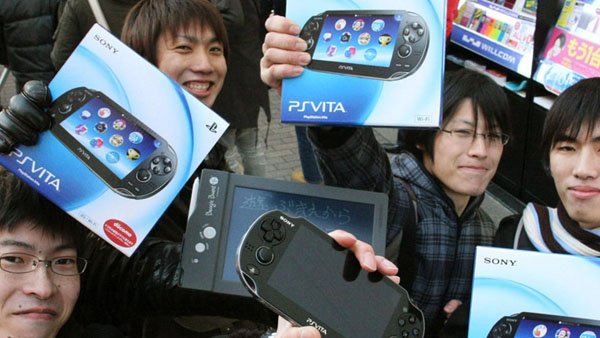NICOSIA, Cyprus (AP) ? When Costas Kalapodas was diagnosed with brain cancer two years ago and given months to live, he saw one sure place to put his money: Cyprus' biggest bank.
The 43-year-old threw his entire savings into Bank of Cyprus stock, and even took out a 47,000 euro loan to pad his holdings. He then gave his wife Maria strict instructions to sell the shares when prices reached one euro per share in order to build a 500,000 euro ($640,000) nest egg that he felt would be sufficient to guarantee her, their 9-year-old son, Yiannis, and 4-year-old daughter, Rita, a secure future.
Bank of Cyprus, after all, was the bedrock of the nation's banking system. And Costas was himself a proud employee of the financial institution. He fought the tumor valiantly but succumbed last November, Maria Argyrou-Kalapoda said, certain that his investment was safe.
Today, a multibillion-euro bailout that cash-strapped Cyprus agreed with international creditors has rendered Bank of Cyprus shares effectively worthless, their value wiped out under the terms of a complicated recapitalization scheme. His 35-year-old widow, who never knew how much he originally poured into the bank, is wondering how she and her family will survive in the years to come.
"Costas was so sure about this, so meticulous about the way he went about this investment," said Argyrou-Kalapoda. "He even told me the exact price at which I should sell the shares so we would get enough money not to have to worry about the future."
Maria, who has held a job at the Cyprus Stock Exchange since 1999, says that in addition to seeing the value of her husband's savings destroyed, she's now saddled with a loan for something that has been taken away in the bailout.
"It's not that I'm shirking my responsibilities, but why should I be paying for shares that are worthless, especially when those shares were supposed to be security for my children's future?"
"It's unbelievable what's happening in this country," she said. "I feel lost."
It's not just fat-cat investors or Russian oligarchs bemoaning losses. Ordinary people who built up savings are the ones facing real disaster. Cypriot authorities agreed that all bondholders, investors and savers with over 100,000 euros tied up in the country's two biggest banks ? Bank of Cyprus and Laiki ? will take massive losses as part of bailout terms. The deal with Cyprus' euro area partners and the International Monetary Fund would secure the country 10 billion euros ($12.83 billion) in rescue money.
Costas and Maria, who diligently socked away money to ensure their kids a good education, had their plans go down the tubes literally overnight in the banking collapse.
Other Cypriots with more conventional savings are also in dire straits. Under the bailout agreement, Laiki, the country's second-largest lender, will be folded into Bank of Cyprus, with large depositors in Laiki losing most of their money. Depositors with more than 100,000 euros at the Bank of Cyprus face losses of up to 60 percent as part of the rescue deal.
Many have felt that Cyprus became ground zero for economic experimentation of the most radical kind: allowing international creditors to raid Cypriot savings in order to protect taxpayers elsewhere from having to pay for banking mistakes.
"When such drastic decisions are being made there's bound to be collateral damage," said University of Cyprus economist Sofronis Clerides. "My feeling is that when those decisions were taken on such a macroeconomic level, it's sometimes difficult to see the reality on the ground."
Uncertainty about the future has hardly dissipated three weeks into Cyprus' near financial ruin. Thousands of bank workers took to Nicosia's streets recently to voice their fear that hundreds of millions in their pension funds kept in Laiki and Bank of Cyprus accounts would be lost, as many jobs in the once thriving sector flush with foreign deposits will be lost.
"Everybody here stands to lose a lot of money, the money you worked for your whole life," said protester Marios Koullouros. "I've been working at Laiki for 27 years. And I think it is a pity to lose everything."
The beleaguered Cypriot government was at pains to assure that pension funds wouldn't be completely wiped out. Government spokesman Christos Stylianides said authorities had ensured pension funds in Laiki accounts wouldn't be lost, but transferred to the Bank of Cyprus. Nonetheless, they could take a hit of as much as 60 percent of their value.
Stylianides said new Finance Minister Harris Georgiades is in talks with trade unions to figure out how to minimize the damage as much as possible.
But all this is little comfort for Maria. She says she's spoken to lawyers who have advised her that she has a solid case to sue because the bailout terms possibly breached domestic laws.
She says she's still mulling it over, but hasn't made up her mind. Instead she falls back to a Cypriot character trait of counting one's blessings.
"I just want my kids and myself to be healthy," she says. "God will provide."
___
Adam P. Pemble in Nicosia contributed.
Source: http://news.yahoo.com/cyprus-crisis-ruins-dying-fathers-plans-kids-070225658--finance.html

